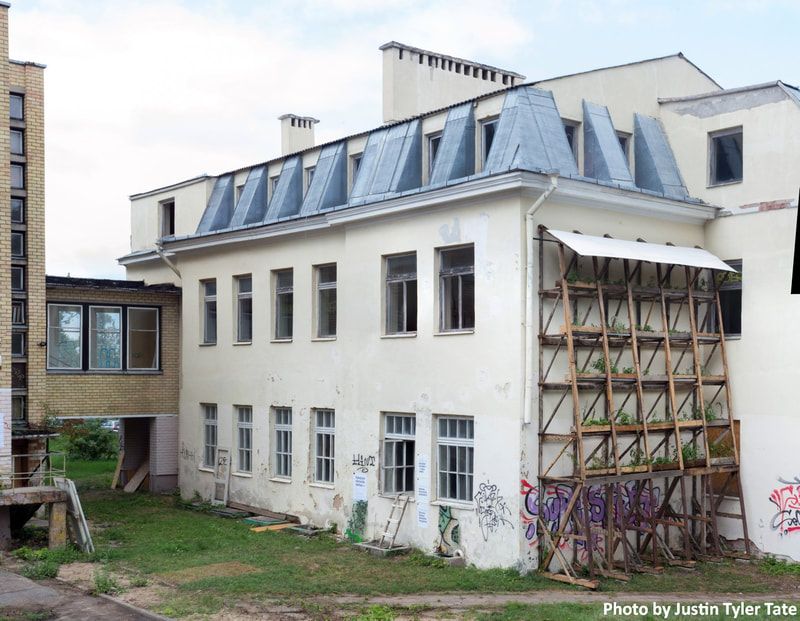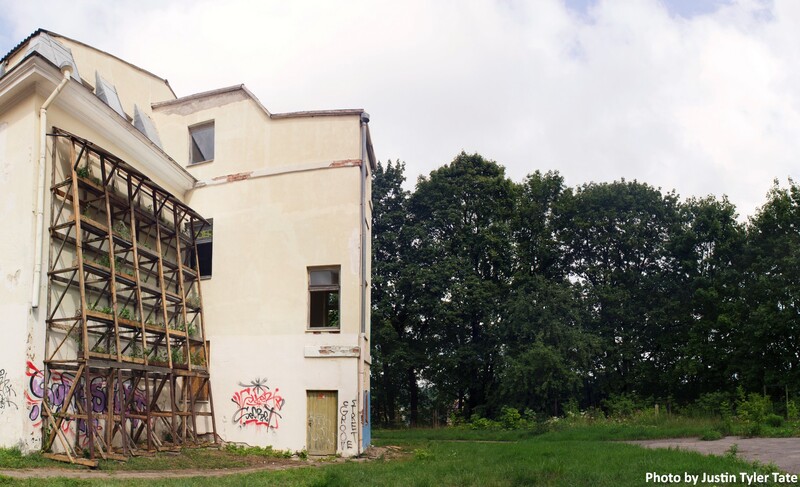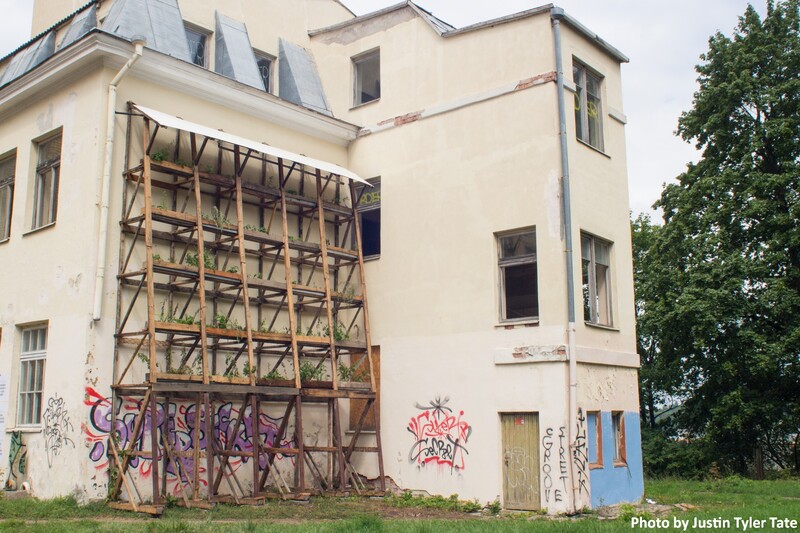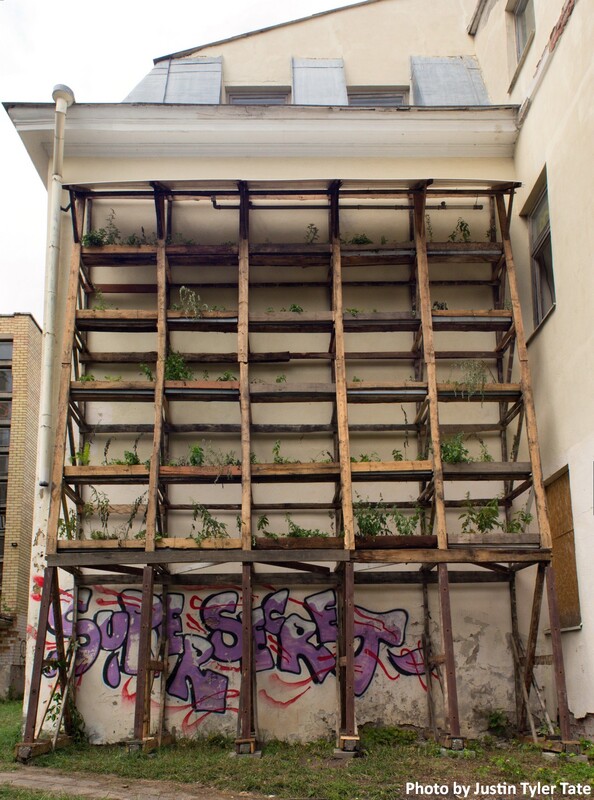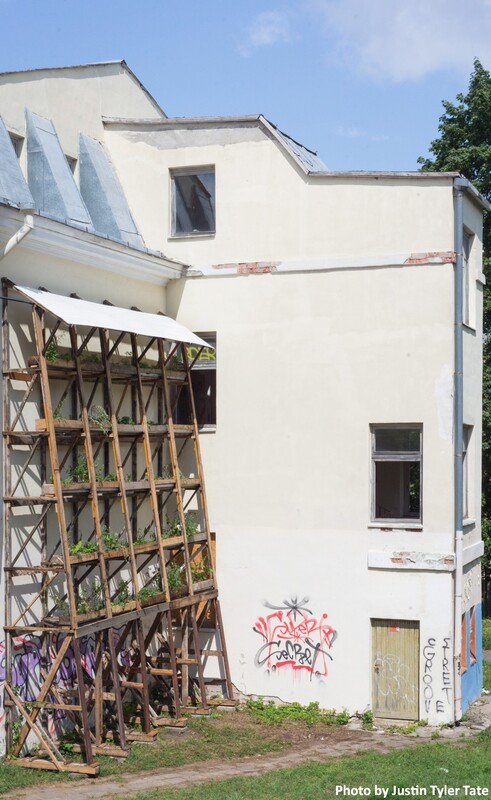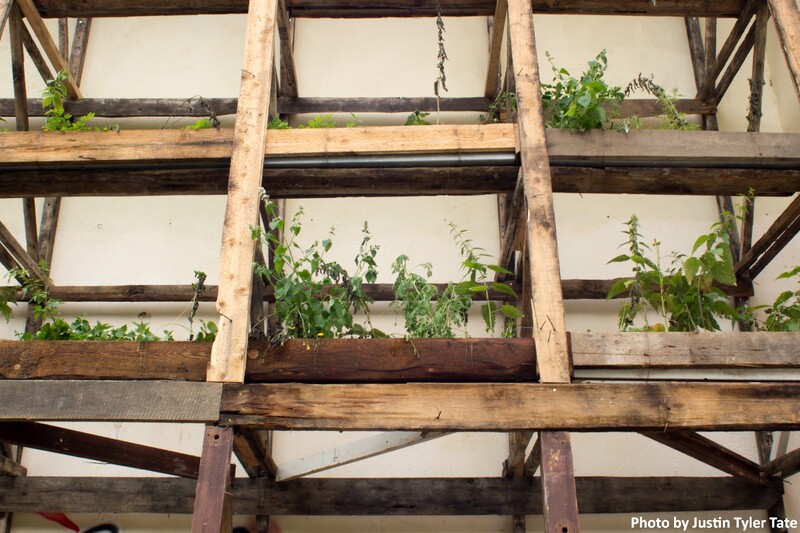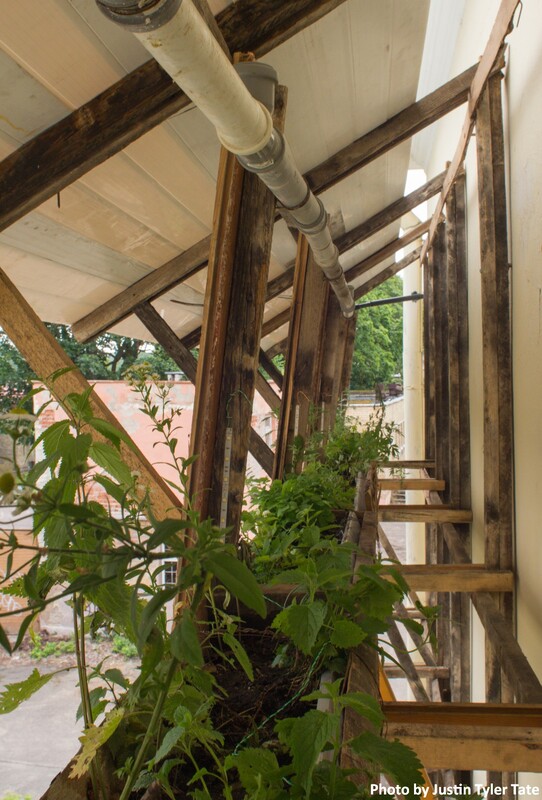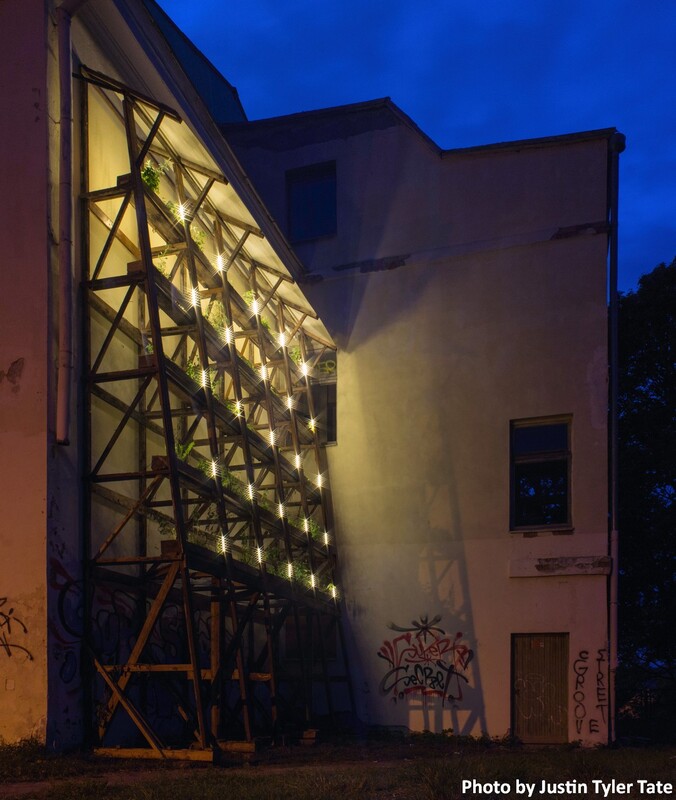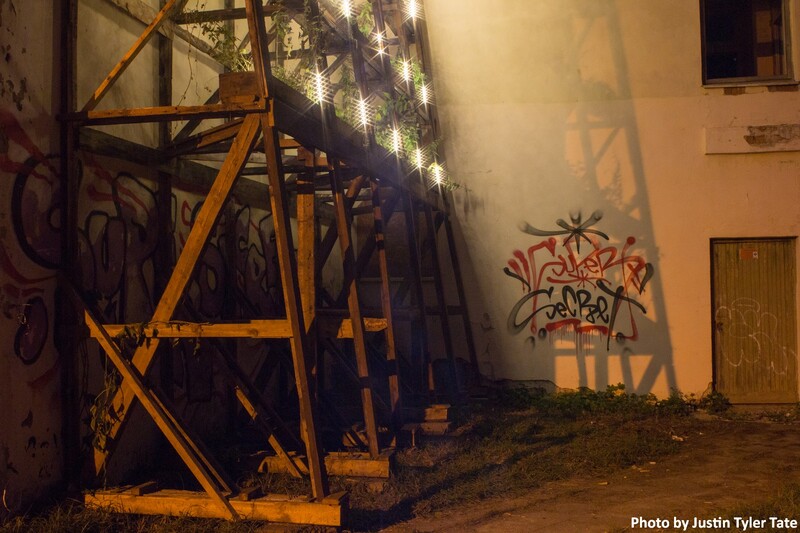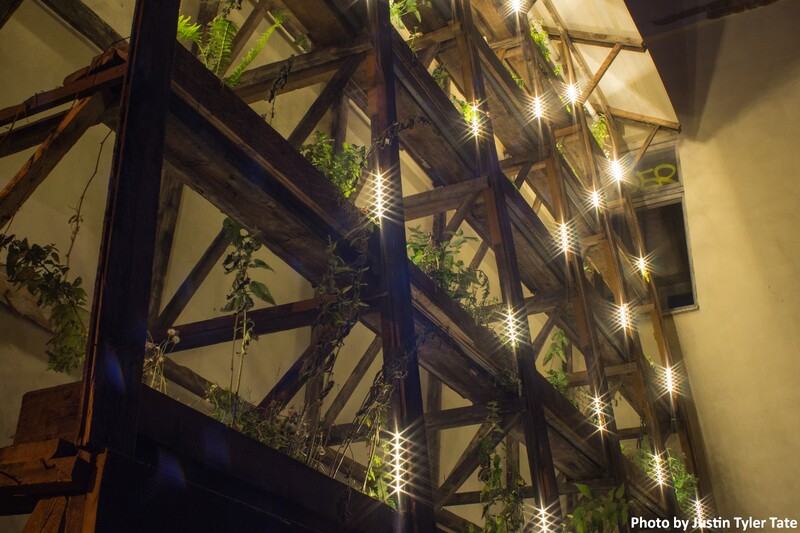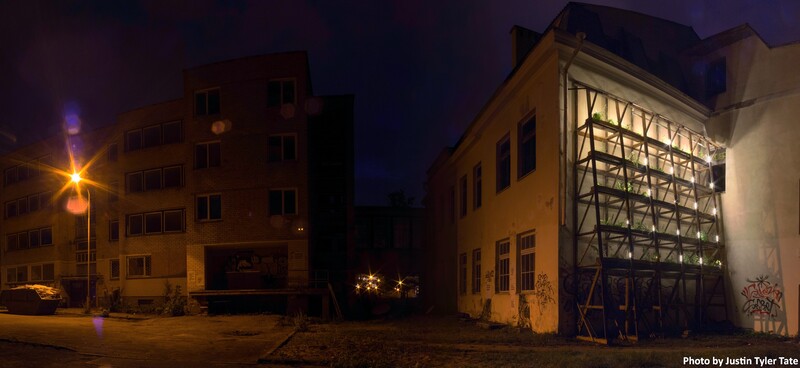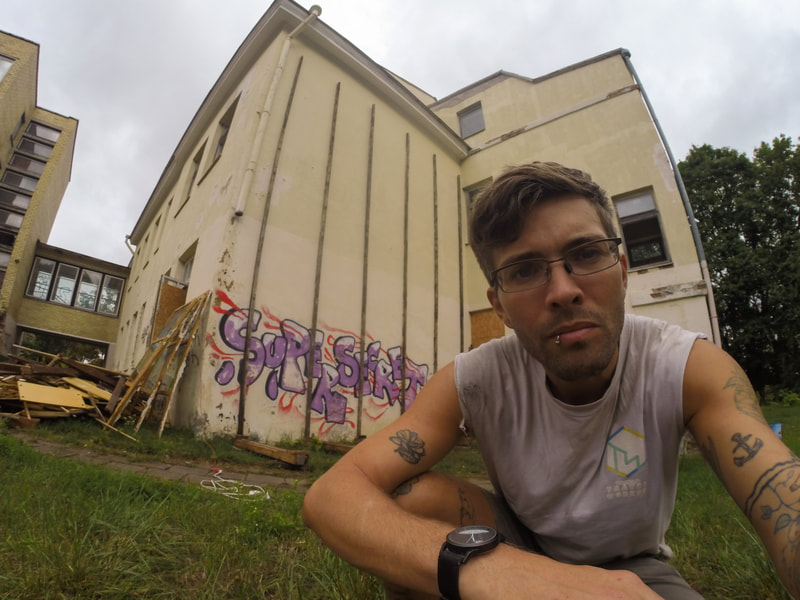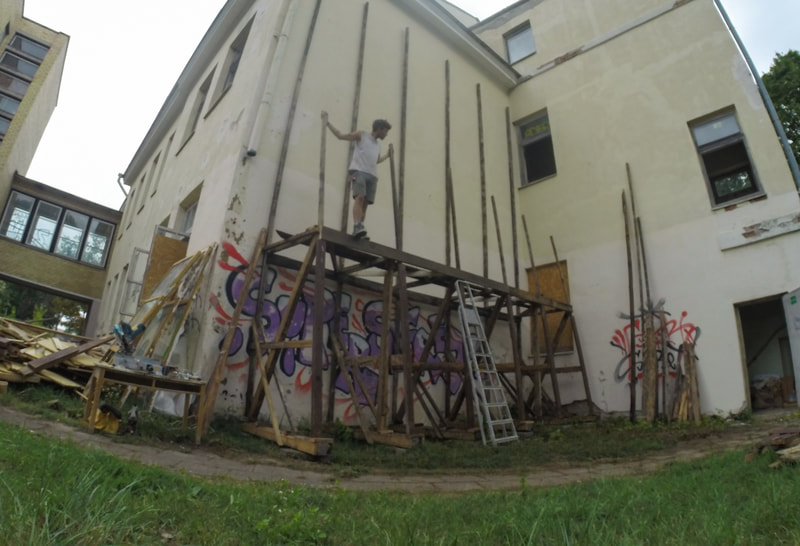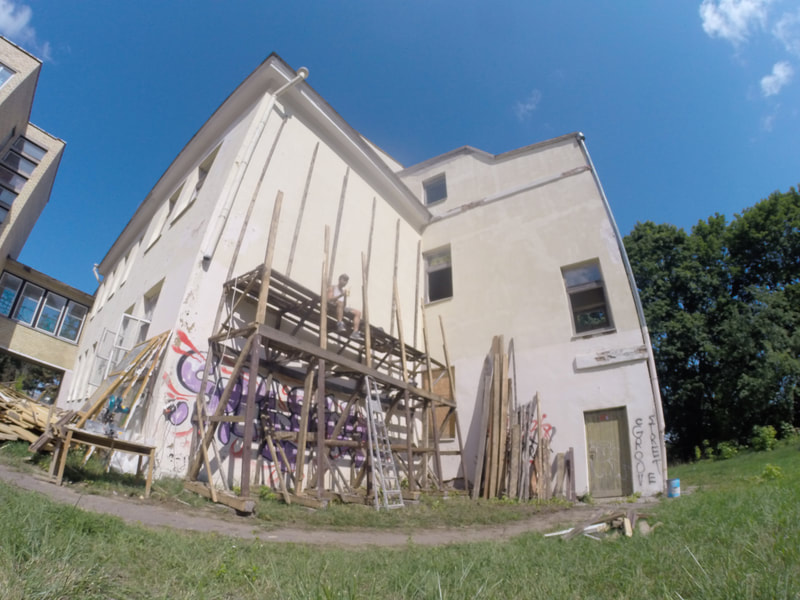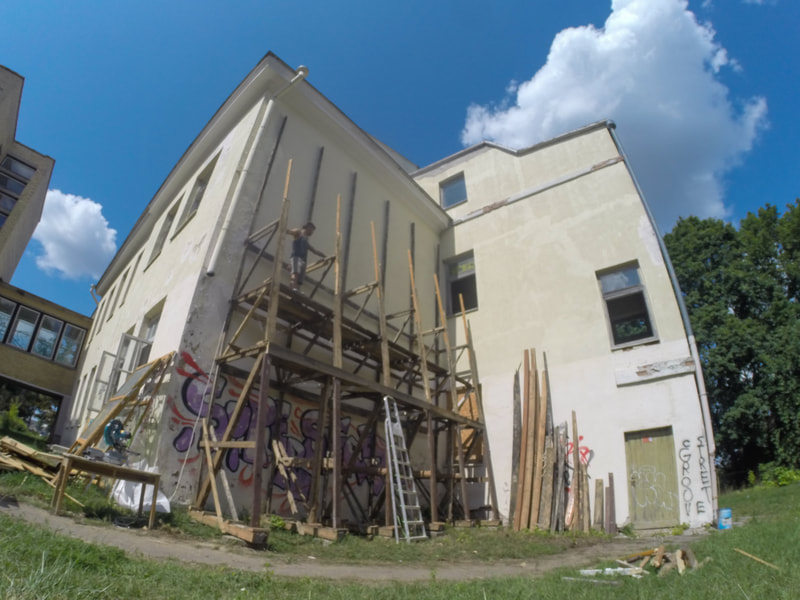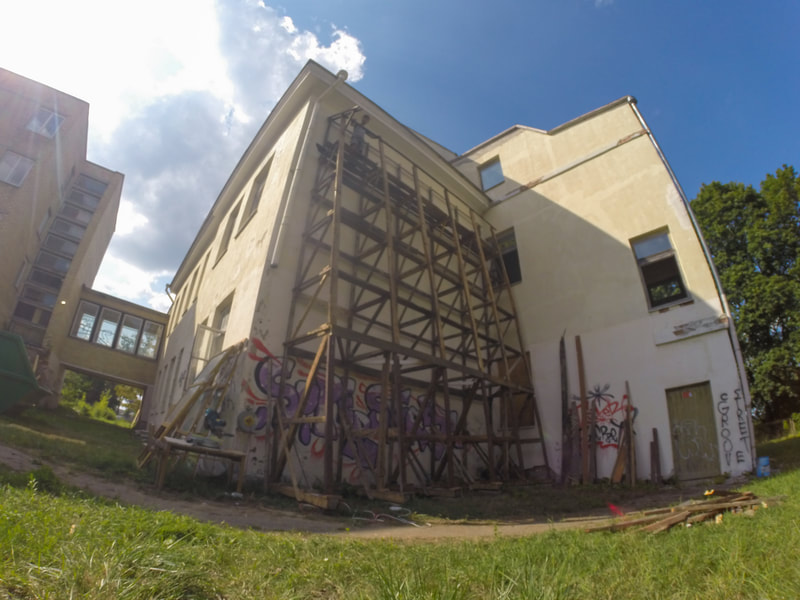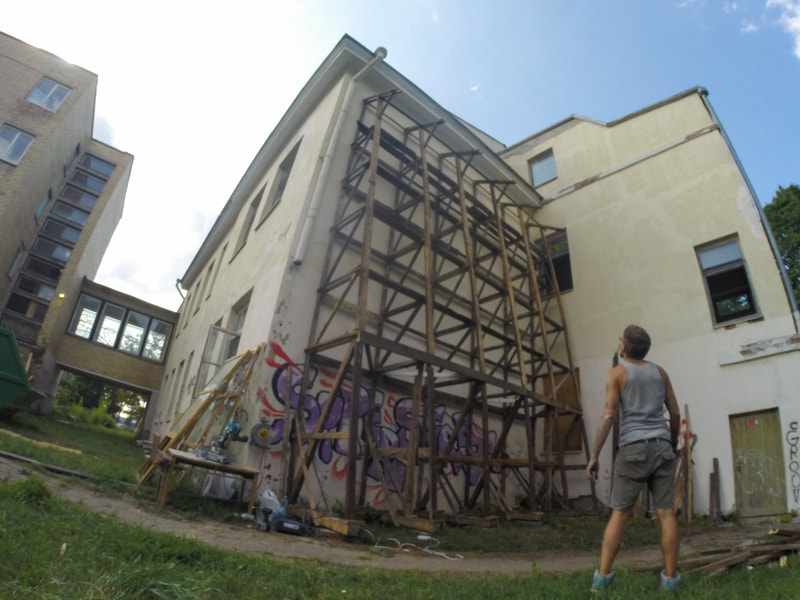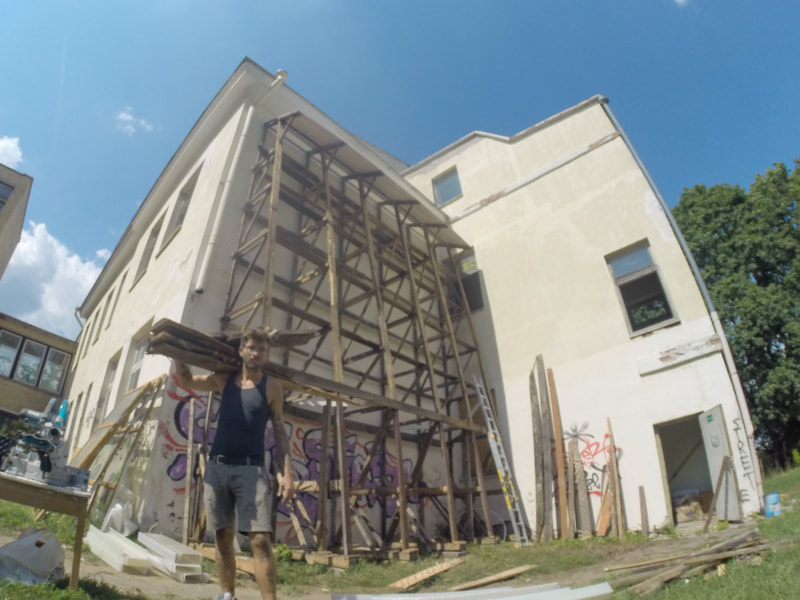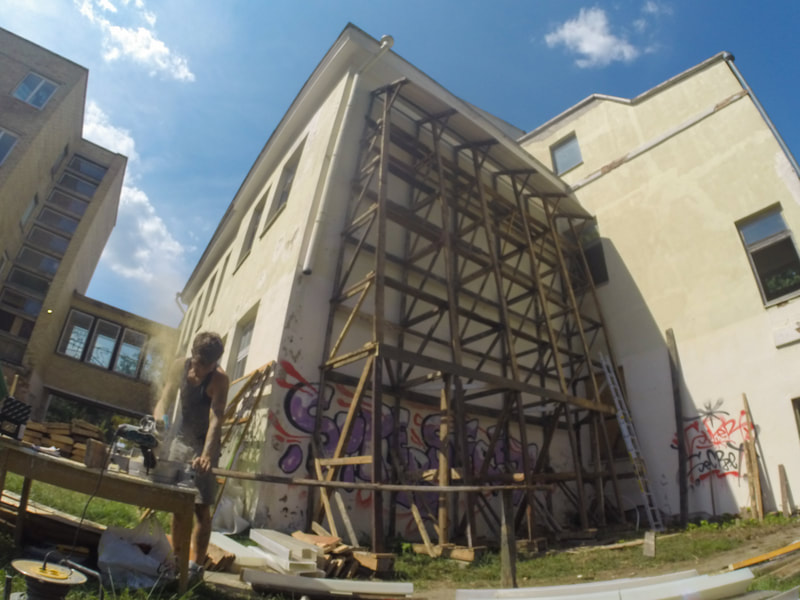Scaffold
6m x 8m x 1.7m
Recycled cement, repurposed wood, found plastic/PVC, 1000 screws, old internet wire, weeds, 10m of LED strip and 10 days.
6m x 8m x 1.7m
Recycled cement, repurposed wood, found plastic/PVC, 1000 screws, old internet wire, weeds, 10m of LED strip and 10 days.
Scaffolding is defined as “a temporary structure on the outside of a building, made of wooden planks and metal poles, used by workmen while building, repairing, or cleaning the building”. In the creation of a scaffold on a site, we signify that it too is in the process of creation or renovation. Thus the work, Scaffold, can be perceived in structural terms but also as a conceptual framework for artistic research and intervention whereby the local environment, community and material resources surrounding and within Vitebsko21-23 are embraced, adapted and utilized to their potential.
The installation uses a sustainable landscaping/gardening design methodology to create a hybridized space of art, architecture and ecology that will grow to colonize the surrounding grounds through natural seed dispersal which has an enhanced capacity through the architectural body. As such, the work sets an example for positive cultural colonization, whereby civilization of the surrounding space is actively discouraged by the installation. Scaffold employs primarily useful weeds such as nettles, dandelions, mugwort, greater celandine, wood sorrel and some species of wildflowers because of their usefulness, aesthetics and durability but also a selection of addition species which have been donated by the local community. Weeds are used in the work as a force of resistance against drives towards cultivation and hegemony as they seek to occupy any and all available spaces.
Scaffold also uses and embraces materials which have been disused, overlooked and discarded. Through a process of repurposing, these materials are elevated to a position of cultural significance and renewed purpose as they are used to create a functional and aesthetic structure that is able to enhance the reproductive and colonial capabilities of the weeds. As much as the weeds are primarily useful, they’re also seen as a nuisance and so the structure provides a place of refuge where they can live out their lives without being plucked, mowed, trampled and pissed on. The materiality of the work reflects the change of states which the Vitebsko21-23 site is going through, from decay and abandon to renew and revitalization. Additionally, the work bricolages old scraps of piping in the creation of a rainwater irrigation system as well as LEDs for lighting to aid plant growth.
These transformations, and change of perspectives, illustrated and emphasized through the work point to a methodology which assumes that local materials have nearly limitless reuses and also that biological resources are collaborators rather than subjects. A scaffold is therefore not simply a structure but also the processes which allows us to develop as a species in relation to our environment.
The installation uses a sustainable landscaping/gardening design methodology to create a hybridized space of art, architecture and ecology that will grow to colonize the surrounding grounds through natural seed dispersal which has an enhanced capacity through the architectural body. As such, the work sets an example for positive cultural colonization, whereby civilization of the surrounding space is actively discouraged by the installation. Scaffold employs primarily useful weeds such as nettles, dandelions, mugwort, greater celandine, wood sorrel and some species of wildflowers because of their usefulness, aesthetics and durability but also a selection of addition species which have been donated by the local community. Weeds are used in the work as a force of resistance against drives towards cultivation and hegemony as they seek to occupy any and all available spaces.
Scaffold also uses and embraces materials which have been disused, overlooked and discarded. Through a process of repurposing, these materials are elevated to a position of cultural significance and renewed purpose as they are used to create a functional and aesthetic structure that is able to enhance the reproductive and colonial capabilities of the weeds. As much as the weeds are primarily useful, they’re also seen as a nuisance and so the structure provides a place of refuge where they can live out their lives without being plucked, mowed, trampled and pissed on. The materiality of the work reflects the change of states which the Vitebsko21-23 site is going through, from decay and abandon to renew and revitalization. Additionally, the work bricolages old scraps of piping in the creation of a rainwater irrigation system as well as LEDs for lighting to aid plant growth.
These transformations, and change of perspectives, illustrated and emphasized through the work point to a methodology which assumes that local materials have nearly limitless reuses and also that biological resources are collaborators rather than subjects. A scaffold is therefore not simply a structure but also the processes which allows us to develop as a species in relation to our environment.
Images from the construction of the work:
Scaffold was executed during the inaugural artist in residence program at Vitebsko 21-23 in Vilnius, Lithuania, organized by the Lithuanian Interdisciplinary Artists’ Association (LeTMeKoo) & partly supported by Lithuanian Culture Council.

